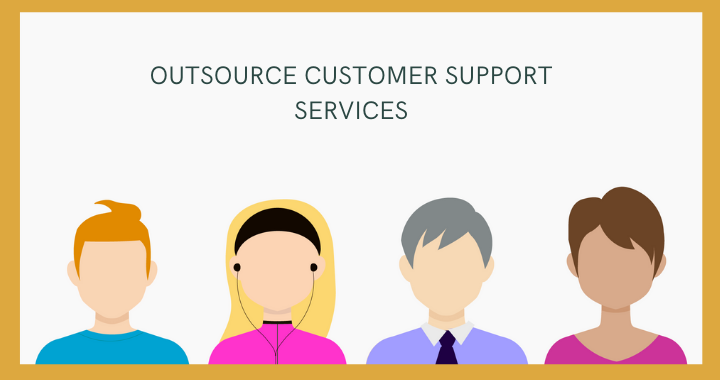Outsource customer support services is the lifeblood of every organization since it allows key audiences to interact directly with the firm’s brand and internal personnel. According to Microsoft, 90 percent of Americans consider customer service when determining whether or not to do business with a firm, and 58 percent of those who experience bad customer service would switch organizations. Due to expansion or other pressing concerns, your organization may not be able or willing to acquire, train, and retain customer service support workers. One of the most important customer service decisions you’ll make as a business owner is to outsource customer support services or maintaining your customer service in-house.
This article will tell you of the most important variables to consider while making this decision and give extra context based on your organization’s size.
What Are the Benefits of choosing to outsource customer support?
Until recently, contacting businesses was a time-consuming process. As a firm became larger or busier, it became more difficult to access its support staff.
Many consumers chose to tackle their concerns on their own after learning how long they would have to wait to talk with a customer support person. As the on-demand economy increases, businesses are increasing their customer service efforts, and clients may acquire services on the move. Customer service should be a priority for all businesses, not just large enterprises. This is because a company’s reputation is built on good customer service from the beginning.
The question now is whether you should outsource customer service or not because no business can thrive without excellent customer service.
How to outsource customer support Effectively
These are our top recommendations for assisting you in making the best option possible while looking for an outsourced customer support partner.
Outsourcing your customer support might be a game-changer for your company. Finding the right partner may add specialized skills and a flexible customer support strategy. It also frees up internal teams to focus on revenue-generating initiatives. It allows you to scale up service assistance and give your most valuable customers an unrivalled experience.
When Dealing with Customer Service Outsourcing Companies, Follow These Steps
When customers have more choices than ever before in today’s market, customer service has become the backbone of any modern organization, particularly those in eCommerce and SaaS. On the other hand, a firm may not have the means or the determination to give consistently exceptional customer service. So, in this situation, it’s wise to outsource customer support.
But where do you begin if this is your first time outsourcing customer service? What should you do to make sure everything goes smoothly? If a firm decides to outsource help, these are the measures it should follow.
When choosing one of the various customer service outsourcing companies, you will usually go through a few stages. The following are some of them:
1. Analyze the business
Conducting a thorough analysis of your firm is the first step in working with an outsourced customer service provider. The provider should be knowledgeable with your company’s processes, the products and services you offer, and your consumers’ needs. After comprehensive research, the subcontractor may determine the appropriate support tools and channels (email, live chat, phone, etc.) for you and your clients.
2. Customer service workers receive training.
The next phase is team training. Outsourced technical assistance must go through onboarding before connecting with your clients. This method includes several training sessions and discussions with your business representatives. The new team learns about your company’s needs and what you anticipate from the relationship throughout this phase. It may take up to two weeks to complete.
3. Testing
The support staff is put to the test once the outsourcing provider has acquired all of the information about your organization to determine if they understand your business and your requirements well enough to handle your customers’ inquiries and issues.
4. Implementation
After the onboarding and analysis procedures are done, your new customer support team is ready to go. Despite the fact that support duties are not handled on your premises, most outsourcing businesses allow clients to watch how their team interacts with consumers regularly. You can also receive monthly or as-needed reports on these connections.
5. Improvements
The new support crew then continues to improve and adapt to your company’s needs. You must keep your staff updated about new goods, services, stores, and so on as a firm.
Putting It All Together
Outsource customer support services is the greatest alternative if your company is having problems fulfilling customer support expectations. Your organization may save money and time by outsourcing customer support. Thanks to this detailed guide, you now know how to prepare for outsourcing and what processes to follow when outsourcing customer service.

